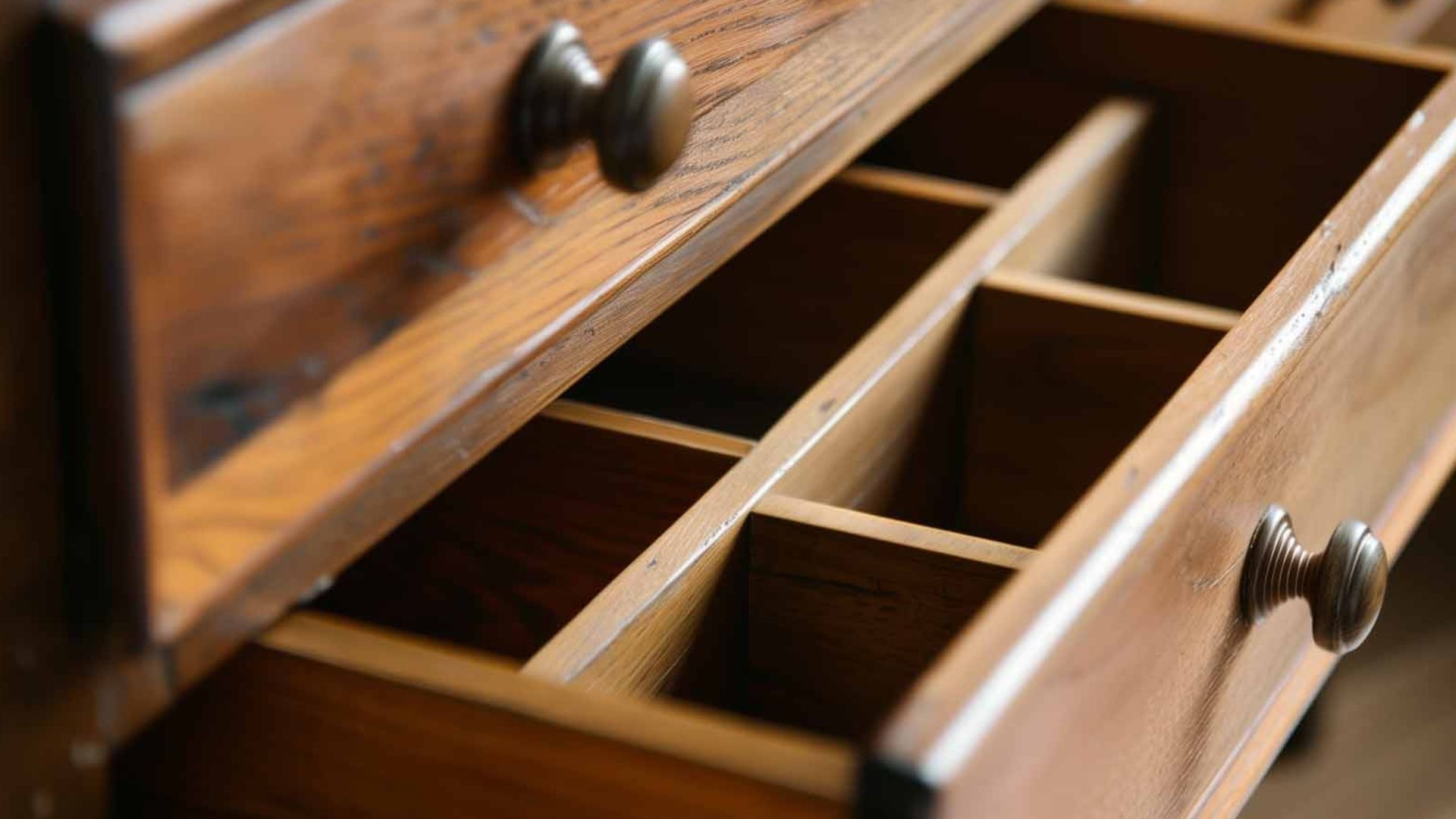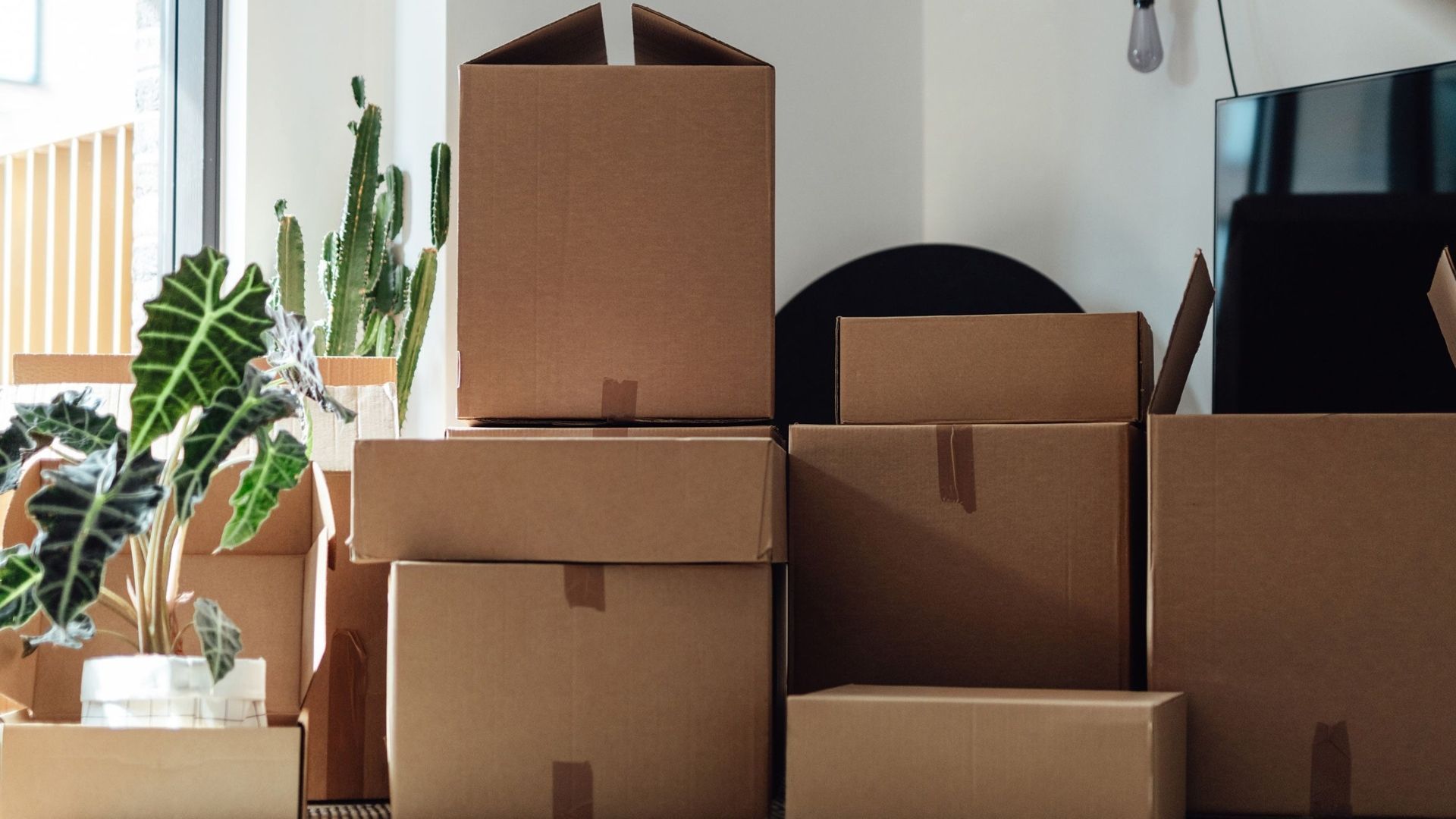How to Properly Label Moving Boxes?
To properly label moving boxes. The right labeling system saves you time, prevents damage, and helps movers know exactly where everything goes. Approximately 27.1 million Americans moved in 2022, making organization crucial for successful relocations.
Properly Label Moving Boxes
Why Labels Make Moving Easier
Moving boxes without labels is like driving without a map. You'll get lost, waste time, and feel stressed. With over 31 million Americans moving each year, proper organization becomes essential for a smooth relocation. Good labeling helps you and your movers in many ways:
- Saves Time: No more opening every box to find what you need
- Prevents Damage: Fragile items get handled with care
- Reduces Stress: Everything goes to the right room quickly
- Helps Movers: They know exactly where to put each box
When you label boxes properly, unpacking becomes a breeze instead of a nightmare.
What You Need to Get Started
Good labeling starts with the right tools. Here's what every mover should have:
Markers:
- Permanent, waterproof markers (at least 5 colors)
- Thick tip for easy reading
- Black markers for main text
- Colored markers for room coding
Labels:
- Pre-printed moving labels (optional but helpful)
- Colored stickers or tape
- Plain white labels for custom writing
Other Supplies:
- Clear packing tape to protect labels
- Scissors for cutting tape
- Measuring tape for box dimensions
Best Ways to Label Your Boxes
The Color System
This is the most popular way to label boxes. It's simple and works great for visual learners.
How It Works:
- Pick one color for each room
- Use colored markers, tape, or stickers
- Mark boxes with the room color
- Put matching colored paper on doors at your new home
Example Color System:
- Red: Kitchen
- Blue: Bedroom
- Green: Living room
- Yellow: Bathroom
- Purple: Office
The great thing about colors is that movers can see them quickly, even when boxes are stacked high.
The Number System
Some people prefer numbers over colors. This works well for large moves with many boxes.
How It Works:
- Give each box a unique number
- Write the room name and number on the box
- Keep a master list of what's in each numbered box
- Use the list to find specific items quickly
Example:
- Box #1: Kitchen - Coffee maker, toaster, small appliances
- Box #2: Kitchen - Dishes, glasses, cups
- Box #3: Bedroom - Clothes, shoes, accessories
The Room-Name System
This simple system focuses on where items belong in your new home.
What to Write:
- Room name in large letters
- Brief description of contents
- Any special handling notes
Example: "KITCHEN - Pots and Pans - Heavy"
Step-by-Step Labeling Process
When to Label Your Boxes
Timing is everything when labeling boxes. Follow this golden rule:
Don't label before packing - You won't know what's really inside Don't label days later - You'll forget what you packed DO label right after sealing - The contents are fresh in your mind
Where to Put Labels
Put labels in these spots for maximum visibility:
- Top of the box - For when boxes are on the ground
- Two sides of the box - For when boxes are stacked
- Avoid corners - Labels can tear off easily there
This way, you can read the label no matter how the box is positioned.
What to Write on Every Label
Every label should have these three things:
1. Room Destination (Top Line) Write the room name clearly: "KITCHEN," "MASTER BEDROOM," "KIDS' BATHROOM"
2. Contents Description (Middle Line) List 3-4 main items: "Dishes, Glasses, Mugs, Bowls"
3. Special Instructions (Bottom Line) Add important notes: "FRAGILE," "HEAVY," "OPEN FIRST"
Special Items That Need Extra Care
Fragile Items
Fragile boxes need extra attention. Here's how to label them:
- Write "FRAGILE" in large red letters on all sides
- Add "HANDLE WITH CARE" underneath
- Use arrows to show "THIS SIDE UP"
- Consider using bright colored tape to make them stand out
Heavy Boxes
Heavy boxes can hurt people if not handled properly:
- Write "HEAVY" clearly on multiple sides
- Add the approximate weight if you know it
- Use these for books, tools, or kitchen appliances
Priority Boxes
Some boxes need to be opened first:
- Label with "OPEN FIRST" or "ESSENTIALS"
- Use a bright color that stands out
- Include items for your first night: toiletries, medications, phone chargers, change of clothes
Furniture and Equipment
Don't forget to label large items:
- Use removable labels that won't leave residue
- Include the destination room
- For multiple similar items, specify which person or room
Smart Labeling Tips
Using Shortcuts and Symbols
Save time and space with smart shortcuts:
Common Abbreviations:
- K = Kitchen
- BR = Bedroom
- LR = Living Room
- BA = Bathroom
- FRAG = Fragile
- HVY = Heavy
Useful Symbols:
- ↑ = This side up
- ⭐ = Priority/Open first
- 📱 = Electronics
- 🍽️ = Kitchen items
Making a Master List
Keep track of everything with a simple list:
- Number each box
- Write down the contents
- Note the destination room
- Mark special handling needs
- Keep the list on your phone or in a notebook
This helps you find specific items quickly and makes sure nothing gets lost.
Mistakes to Avoid
Writing Too Small
If movers can't read your labels, they're useless. Write large enough to read from a few feet away.
Labeling Only One Side
Boxes get stacked and turned. Labels on multiple sides save time and confusion.
Using Vague Descriptions
"Miscellaneous" or "Random stuff" doesn't help anyone. Be specific about what's inside.
Forgetting Your Last Name
For long-distance moves, add your last name to boxes. This helps if your items get mixed with other shipments.
Not Protecting Labels
Rain, snow, or rough handling can destroy labels. Cover them with clear tape to keep them readable.
Choosing Unreliable Moving Companies
Poor labeling becomes even more problematic with dishonest movers. The Federal Motor Carrier Safety Administration reports that while most of the 35 million Americans who move each year work with legitimate companies, complaints against rogue movers are rising. Proper labeling helps protect your belongings and provides clear documentation if issues arise.
Setting Up Your New Home
Prepare Your New Space
Before the movers arrive:
- Put colored paper on doors - Match your box colors to rooms
- Clear pathways - Make sure movers can easily reach each room
- Designate a staging area - For priority boxes and items you'll need first
Unpacking Strategy
Use your labeling system to unpack smart:
- Start with essentials boxes - Get what you need for the first night
- Unpack one room at a time - Don't spread out too much
- Follow your priority system - High, medium, and low priority items
Communicate with Your Movers
Help your local movers understand your system:
- Explain your color coding or numbering
- Point out fragile and heavy boxes
- Show them where each color goes in your new home
Modern Technology for Moving
Moving Apps
Several apps can help you stay organized:
- Sortly - Visual inventory with photos
- Moving Planner - Checklists and timelines
- BoxList - Digital box contents tracker
Photo Documentation
Take pictures of your labeled boxes before they're loaded. This gives you a backup record of what's in each box and can be helpful if you need to file a complaint with authorities. The Federal Trade Commission recommends keeping detailed records when working with moving companies to protect yourself from potential scams.
Green Moving Options
Reusable Labels
Consider labels that can be removed and reused:
- Chalkboard labels you can erase
- Magnetic labels for metal surfaces
- Removable stickers that don't leave residue
Sustainable Supplies
Make your move greener with environmentally conscious choices. According to the Environmental Protection Agency, containers and packaging made up 82.2 million tons of municipal solid waste in 2018. Choose eco-friendly options when possible:
- Use recycled paper for labels
- Choose water-based markers
- Reuse colored tape from old moves
Different Types of Moves
Local Moves
For moves within the same city:
- Simple room labeling works well
- Focus on fragile and heavy items
- Use your packing services for valuable items
Long-Distance Moves
For moves across the country:
- Add your contact information to boxes
- Use more detailed labeling
- Consider professional long-distance moving company services
Apartment Moves
For apartment movers:
- Label boxes with floor numbers
- Note elevator access needs
- Mark boxes that need special handling in tight spaces
Solving Common Problems
Labels Getting Damaged
If labels start peeling or getting wet:
- Cover with clear tape immediately
- Rewrite important information
- Use permanent markers as backup
Boxes in Wrong Rooms
If boxes end up in the wrong place:
- Check your color coding system
- Make sure room signs are visible
- Communicate clearly with movers
Missing Items
If you can't find something:
- Check your master inventory
- Look in similar boxes
- Ask movers about any boxes left in the truck
Creating Your Personal System
Start Simple
Don't overcomplicate your first move. The moving industry has grown to a market size of $21.3 billion as of 2023, with professional movers handling millions of relocations annually. Keep your system straightforward:
- Pick either colors or numbers
- Focus on room destinations
- Mark fragile items clearly
- Keep a simple list
Improve Over Time
Each move teaches you something new:
- Note what worked well
- Identify problem areas
- Adjust your system for next time
Final Thoughts
Proper box labeling turns a stressful move into a smooth experience. The key is finding a system that works for you and sticking with it. Whether you choose colors, numbers, or simple room names, the important thing is being consistent and clear.
Remember, good labeling helps everyone involved in your move. Your movers will appreciate clear instructions, and you'll love how easy unpacking becomes. Take the time to label properly, and you'll thank yourself later when you're settling into your new home.
Start planning your labeling system today, and make your next move the easiest one yet. With the right approach, you'll be unpacked and comfortable in your new space in no time.
Ready to make your move stress-free? Contact our team at Last Stop Moving for professional moving services that take the hassle out of your relocation. We understand the importance of organization and will help make your move smooth from start to finish.



